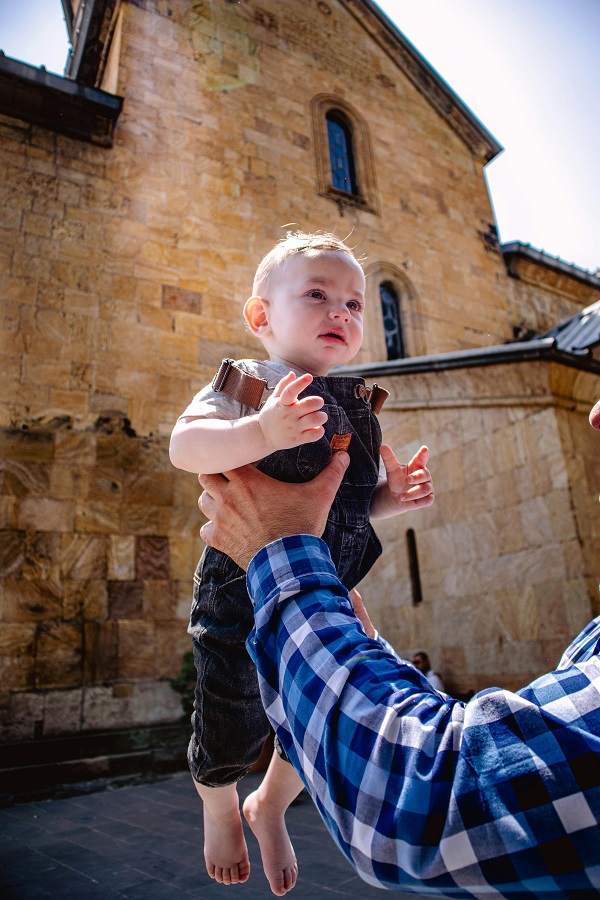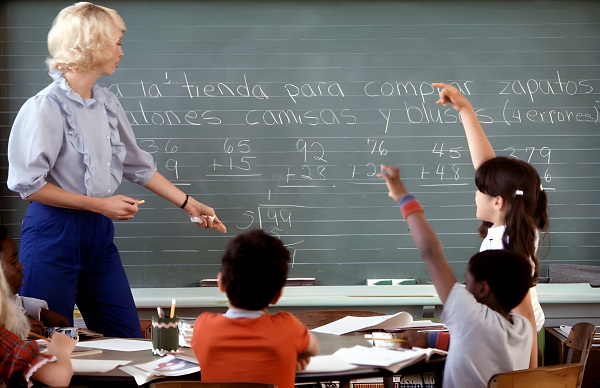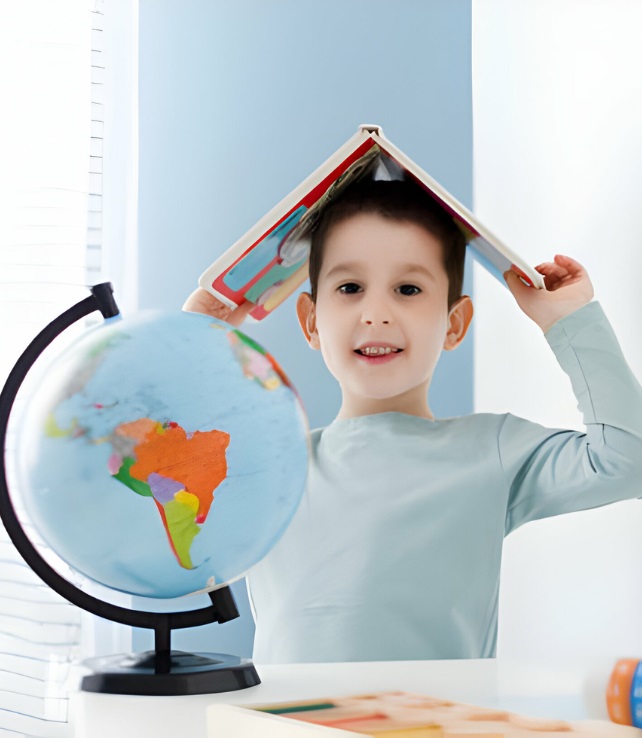Last Updated on January 2, 2025 by Emma
Raising bilingual children offers cognitive and cultural advantages, enhancing communication skills and global perspectives. Parents can employ methods like consistent exposure to both languages and immersing children in diverse language environments to maximize the benefits.
Understanding the importance of bilingualism in today’s interconnected world, many parents are actively seeking ways to raise their children bilingually. Through structured language learning activities, creative use of technology, and fostering a supportive language-rich environment at home, parents can effectively nurture their children’s bilingual abilities.
Embracing the journey of raising bilingual children can create opportunities for enhanced cognitive development, improved creativity, and a deeper understanding of different cultures. By implementing these strategies, parents can set their children up for success in a multicultural and multilingual society.

Discover More – Preparing for Parenthood: What to Expect in the First Year
The Benefits Of Raising Bilingual Children
Raising bilingual children can have a significant impact on their cognitive abilities. Research has shown that bilingual children tend to have better problem-solving skills and enhanced mental flexibility compared to their monolingual peers. This is because speaking multiple languages requires the brain to constantly switch between languages, which exercises and strengthens cognitive functions. Additionally, bilingual children often display better attention spans and improved multitasking abilities, as they regularly engage in the mentally demanding task of code-switching.
Raising bilingual children not only opens doors to different languages but also promotes cultural understanding and acceptance. When children learn multiple languages, they are exposed to different cultures, customs, and worldviews. They gain a broader perspective and develop empathy towards people from diverse backgrounds. Bilingualism helps children appreciate and respect different languages and cultures, fostering inclusivity and intercultural communication skills.
Challenges In Raising Bilingual Children
Raising bilingual children comes with its own set of challenges that parents need to navigate with care to ensure successful language development.
Balancing Language Proficiency
Maintaining equal levels of proficiency in both languages can be challenging for children as they may favor one language over the other.
Social Acceptance
Some bilingual children may face peer pressure or struggle with social acceptance due to speaking a different language at home.
Effective Methods For Raising Bilingual Children
Are you looking for effective ways to raise bilingual children? Implementing the right methods from an early age can greatly benefit your child’s language development. Consistent language exposure and the one parent, one language approach are two key strategies to consider.
One Parent, One Language Approach
- Designate each parent to speak a primary language consistently.
- Encourage your child to use the respective language with each parent.
- This approach helps children differentiate between languages easily.
Consistent Language Exposure
- Immerse your child in both languages through daily interactions.
- Expose them to books, songs, and media in both languages regularly.
- Consistency is key to helping your child become proficient in both languages.
Discover More – Discipline Without Drama: Positive Parenting Techniques
Supporting Bilingualism At Home
Raising bilingual children comes with numerous benefits, from improved cognitive skills to enhanced cultural awareness. While many children are introduced to a second language through formal education or language classes, supporting bilingualism at home is equally important. By creating a language-rich environment and encouraging language mixing, parents can play a crucial role in fostering their children’s bilingual abilities.
Creating A Language-rich Environment
A language-rich environment at home helps children immerse themselves in both languages, providing ample exposure to enhance their language learning. Here are some ways to create a language-rich environment:
- Use both languages throughout daily activities, such as meal times, playtime, and bedtime routines.
- Label objects around the house in both languages to help children associate words with their corresponding objects.
- Read bilingual books or books in each language to expose children to different vocabulary and sentence structures.
- Play music or audio recordings in both languages, exposing children to the rhythm and sounds of each language.
- Engage in activities that involve both languages, such as bilingual board games or language-based arts and crafts.
Encouraging Language Mixing
Language mixing refers to the practice of using both languages interchangeably within a sentence or conversation. While some may worry that language mixing can hinder language development, it actually supports bilingualism. Here’s how to encourage language mixing:
- Normalize and validate language mixing by embracing it as a natural part of bilingualism.
- Respond to children’s language mixing with positive reinforcement, encouraging their efforts to communicate in both languages.
- Model language mixing yourself by incorporating both languages in your own conversations with your child.
- Encourage siblings or relatives who speak different languages to communicate with each other, allowing natural language mixing to occur.
- Provide opportunities for peer interactions with other bilingual children, where language mixing is commonly observed.
Supporting bilingualism at home requires consistency, patience, and a supportive atmosphere. By creating a language-rich environment and encouraging language mixing, parents can strengthen their children’s bilingual abilities and help them flourish in their linguistic journey.

Discover More – The Benefits of Outdoor Play for Children’s Physical And Mental Health
Navigating School And Community Influence
Raising bilingual children involves navigating the influence of school and community on their language development. It’s essential to consider how interactions with teachers and peers, as well as access to bilingual education programs, can impact a child’s language proficiency and cultural identity.
Interactions With Teachers And Peers
Bilingual children may encounter unique challenges in their interactions with teachers and peers. Teachers should be culturally sensitive and recognize the value of bilingualism. Peers should also be encouraged to appreciate and embrace diverse linguistic backgrounds, fostering a supportive environment for bilingual children to thrive.
Access To Bilingual Education Programs
Access to bilingual education programs can significantly benefit bilingual children. Schools offering structured bilingual programs provide an enriched learning environment where children can develop proficiency in both languages. These programs promote bicultural awareness and help children maintain a strong connection to their heritage while excelling academically.
Frequently Asked Questions
What Are The Advantages Of Raising Bilingual Children?
Raising bilingual children can enhance cognitive skills, cultural understanding, and open up more opportunities in the future.
What Are Effective Methods To Raise Bilingual Children?
Consistent exposure, using both languages at home, and encouraging practice are effective methods.
Can Children Become Confused By Learning Two Languages?
Children can differentiate between languages from an early age and are unlikely to become confused.
At What Age Should Parents Start Teaching A Second Language?
Starting from birth, exposure to multiple languages is beneficial for children’s language development.
How Can Parents Maintain Their Child’s Interest In Both Languages?
Engaging activities, interactive language learning methods, and being involved in the language’s culture can maintain interest.
Conclusion
Raising bilingual children is a wonderful way to foster cognitive, social, and cultural development. By incorporating various methods such as consistent exposure, language play, and immersion programs, parents can provide a solid foundation for their children’s language learning journey. The benefits of bilingualism are immense, from improved problem-solving skills to enhanced cultural competency.
Embracing diversity and creating a bilingual environment is a valuable investment in our children’s future. Start early, stay consistent, and watch as your children flourish in their linguistic abilities.

